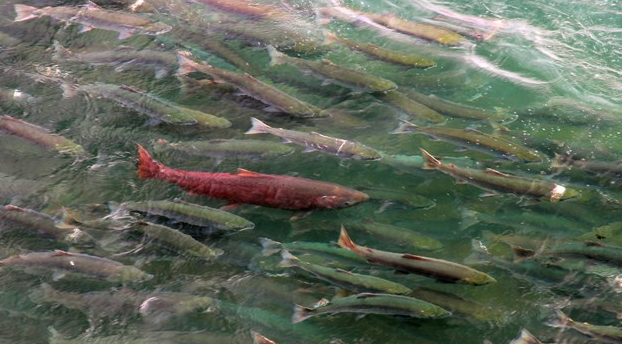Anadromous Fish Migration: Anadromous to Potamodromous?
Anadromous Fish Migration: In effect many fishes migrate long distances to spawn. In order to better understand these movements, scientists have classified these migrations into several categories.
By Patrick Cooney / in Ecology: Organisms & Habitats / The Fisheries Blog
Anadromous
Anadromous fish basically are born in freshwater, then migrate to the ocean as juveniles where they grow into adults before migrating back into freshwater to spawn. Examples: salmon, smelt, American shad, hickory shad, striped bass, lamprey, gulf sturgeon.
Catadromous: Anadromous fish migration
Catadromous fish are born in saltwater and then migrate into freshwater as juveniles where they grow into adults before migrating back into the ocean to spawn. Examples: American eel, European eel, inanga, shortfin eel, longfin eel.
Amphidromous: Anadromous fish migration
Amphidromous fish are born in freshwater/estuaries and then drift into the ocean as larvae before migrating back into freshwater and then grow into adults and spawn. Examples: bigmouth sleeper, mountain mullet, sirajo goby, river goby, torrentfish, Dolly Varden.
Potamodromous: Anadromous fish migration
Potamodromous fish are born in upstream freshwater habitats. Then migrate downstream (still in freshwater) as juveniles to grow into adults before migrating back upstream to spawn. Examples: sicklefin redhorse, lake sturgeon, robust redhorse, flathead catfish.
Oceanodromous
Oceanodromous fish are born near spawning grounds. Then drift on ocean currents as larvae before settling as juveniles to grow into adults before migrating back to spawning grounds. Examples: black grouper, mutton snapper, goliath grouper.
Although these different types of migration classifications may be difficult to pronounce, they are important to understand in order to help maintain connectivity between critical habitats.
Featured Image: Salmon migration
About:
The Fisheries Blog was started in 2011 by a group of scientists. They professional fisheries scientists by day and communicators of scientific information by night. On The Fisheries Blog, we mainly write popular articles and other short fisheries-related stories that are often inspired by the interesting topics that we hear about during the day.







